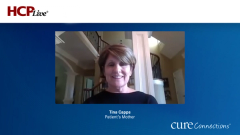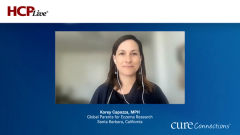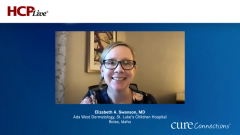
Unmet Needs in Managing Atopic Dermatitis
Elizabeth A. Swanson, MD, and Raj. J. Chovatiya, MD, PhD, examine challenges in managing atopic dermatitis and explore the evolving treatment landscape.
Episodes in this series

Raj J. Chovatiya, MD, PhD: I know it’s a loaded question, but what are the biggest challenges you face when it comes to managing patients with atopic dermatitis?
Elizabeth A. Swanson, MD: One is access and insurance frustrations, which can wear on you as a physician. All you’re trying to do is do the best for the patient, and you feel as if there are roadblocks in your way. Sometimes going through the prior off struggle, it’s like jumping over hurdles. But every time you jump over a hurdle, somebody says, “Wait, did you fail pimecrolimus [Elidel] first”? Can I jump this hurdle, please? Every hurdle is more than the hurdle. It’s questions and paperwork and all that stuff. Access is a big deal. The other thing is there’s a lot of misinformation out there. Programs like this with participants like this are excellent resources for patients with atopic dermatitis who are struggling. But there’s a lot of stuff out there on the internet that isn’t exactly the information I want my patients perusing and following. Sometimes I’m combating that during my clinic visits as well.
Raj J. Chovatiya, MD, PhD: You highlighted a couple of big challenges. I’ll take a forward-facing view. In my estimation, 1 of the big challenges when it comes to medications—let’s say in new treatments—is that atopic dermatitis sometimes feels like it’s a bunch of different conditions under this umbrella. Patients present so differently and have different constellations of signs and symptoms. Their comorbidities are totally different. It’s 1 reasons why having 1 or 2 treatments isn’t enough. We’re not at a point where we can say this is going to work for everybody without any exceptions. We’ll probably never get to that point because of the way that atopic dermatitis works. We definitely need to continue looking into new mechanisms of actions for new therapies.
As far as unmet needs go, evolution in the topical space has largely been limited until recently. We’ve had topical corticosteroids and topical calcineurin inhibitors, but at a certain point, everyone said, “That’s enough. We’re done. We don’t need any more.” Until essentially the approval of crisaborole a few years ago on topical ruxolitinib, there wasn’t much happening, but now there is a lot of stuff that’s far in the pipeline. A new topical PDE4 inhibitor roflumilast looks to be more potent than the previous predecessor crisaborole that also has good application site. Not much reactivity for patients. Topical tapinarof is another 1, a new class of medications with a new mechanism based on returning the skin to homeostasis. That’s just to highlight a couple.
Even on the systemic side, we have new oral therapies. We talked about the JAK inhibitor class. There are new targets being looked at for biologic therapy, and there’s more specific targeting of interleukin 13, another pathway called OX40 ligand, and a variety of others that are probably going to be coming to a toolbox near us. The more choices we have, we can hopefully get to that point of saying, “This is what somebody’s signs, symptoms, comorbidities look like at baseline. This is the best treatment I’m going to match up with.” That’s the Holy Grail for what we want in the dermatology community. Hopefully we’re going to get to that point. We’re a lot closer than we were before, so the treatment landscape is going to continue evolving. As I mentioned before, it’s not an exaggeration to say that we’re beyond 100 in terms of everything across various phases of trials. If anyone ever to the registered database for clinical trials, you’ll see there’s a ton going on for atopic dermatitis.
One big area that I’ll leave on, where I want to see more work done, is that when there are differences in racial and ethnic background, geography, patients with skin of color vs not, how does all this figure into No. 1, appropriate diagnosis and estimation severity, and No. 2, the best and most effective and safe treatment. Even with certain conventional treatments, there’s an undue burden placed on patients with skin of color. I’ll highlight topical corticosteroids as 1 of those. Chronic use of topical corticosteroids is associated with dyspigmentation. It’s a problem that I’ve had with my patients with skin of color. I’m sure Lisa has seen it in hers as well. We need other options from that simplistic standpoint, but even when you break it down in terms of differences in biology and presentation, there probably are different aspects of the disease that are going to need to be researched.
That’s how I see a few of those challenges from a treatment and patient-identification perspective. This awesome panel highlighted issues when it comes to actual access of medication, advocacy, building that community, what it like to go on that journey: from the patient and caregiver side and from the medical side. From that point, I’m going to close. A big thank-you for everyone for watching this HCPLive® Cure Connections®. If you enjoyed the program, please subscribe to our e-newsletters to receive upcoming programs and other great content right in your in-box. With that, a big thank-you.
Transcript Edited for Clarity
Newsletter
Access practical, evidence-based guidance to support better care for our youngest patients. Join our email list for the latest clinical updates.









